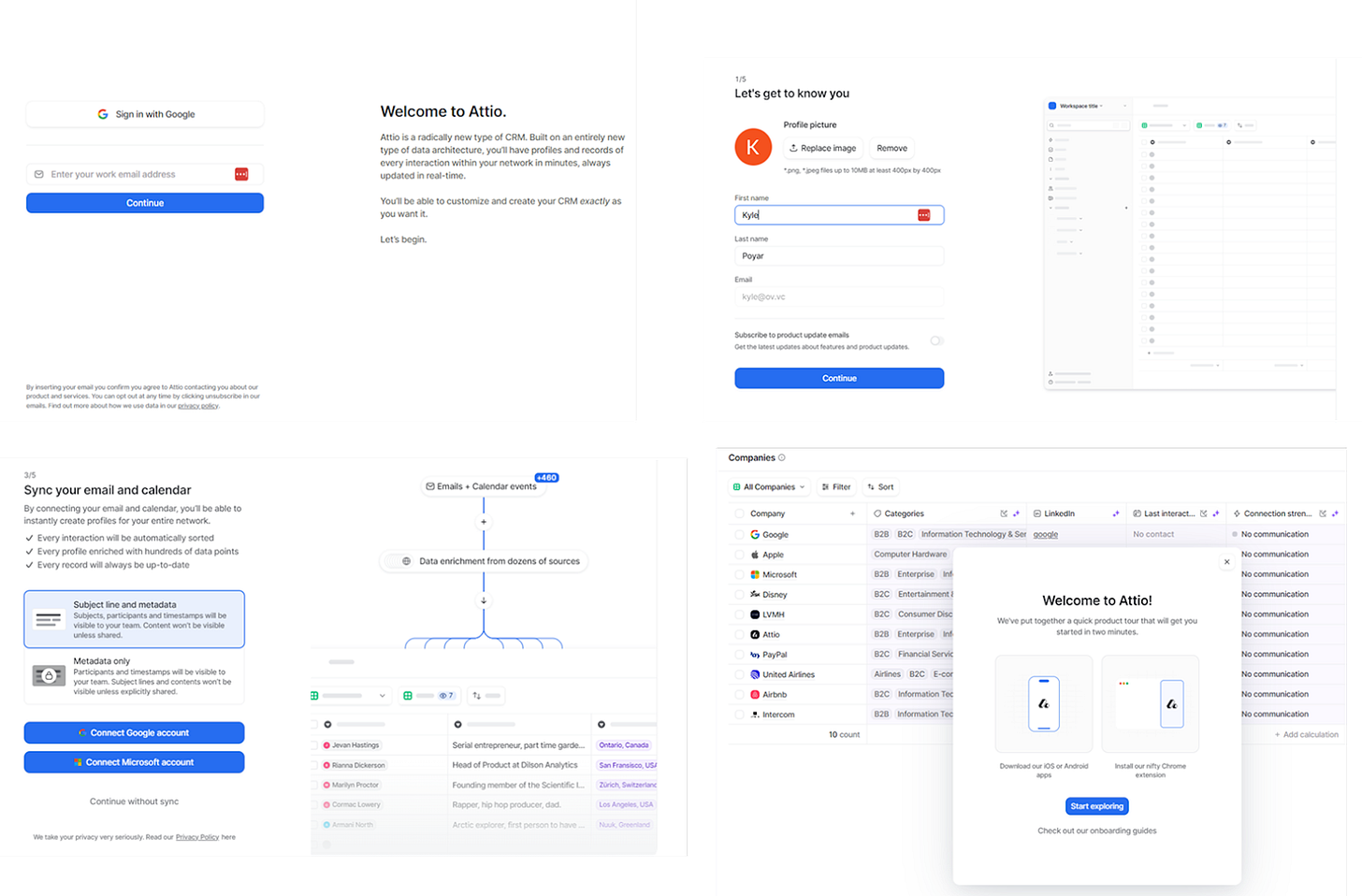Can PLG beat Salesforce?
Why Attio spent 3+ years to launch a PLG hit
Product-led growth has come to nearly every corner of productivity tooling. That is, every corner except for arguably the world’s largest software category: CRM.
CRM remains a top-down purchase where implementation is a process and where the lion’s share of the market is dominated by decades-old players. The case for disruption essentially writes itself.
Of course, many have tried or are trying. There’s Pipedrive in the pipeline management space (exited to Vista Equity at a $1.5B valuation) and HubSpot’s free CRM. Monday.com played up their sales CRM product in its latest earnings call, claiming that the product has already been adopted by 5,000+ accounts. Many folks give up on off-the-shelf tools and stitch together Airtable and Notion with hot glue and a prayer.
One new entrant I’ve been tracking is Attio, which emerged in March 2023 with a fresh $23.5M Series A. The day after announcing their funding news, Attio rose to #1 product of the day on Product Hunt, garnering 1,442 upvotes. They’ve already grown to thousands of customers and counting. That doesn’t happen much in the staid world of CRM.
I caught up with founders Nicolas Sharp (CEO) and Alexander Christie (CTO) about Attio’s growth journey and unconventional approach. We covered how they built a PLG product from scratch, what gave them the conviction that Attio was ready for self-service, and why they chose freemium pricing.
The early stages: building a PLG product from scratch
Prevailing wisdom is to ship products as quickly as possible, find the gaps, and expand from the MVP as you learn from customers. Nick and Alex went the opposite way. They built Attio for three years (!) before being ready for a public launch.
The pair were inspired by the stories of folks like Airtable and Figma who made big upfront investments to get great products to market. And they fundamentally believed that approach was necessary if they wanted to make a dent in a market as large as CRM (estimated TAM: $50 billion).
Nick underscored that they weren’t building in isolation. He tried to be very deliberate about Attio’s ideal customer profile (ICP) and choice of design partners. It was hard to convince these early users to take a leap of faith on an untested product, but the Attio founders aimed to win folks over by putting in the hours.
“As an early stage startup, you don’t always have a lot of leverage. But what you can do is work harder and go above and beyond. We went absolutely beyond with super unscalable processes like weekly check-in calls with people who don’t pay for the product or free data consulting to migrate a customer’s data from another CRM.”
- Nicolas Sharp
It’s worth noting that the co-founders did pivot along the way. Nick and Alex first built Fundstack, a CRM specifically for VCs, in 2017. They initially believed that the CRM opportunity was in providing a universal solution and figured they’d be in a better position to do that if they focused on one specific industry. The team got to the point where they had an early set of customers with a high ACV, low volume model.
However, they began to be flooded with different feature requests from early VC customers. The truth was, there wasn’t a universal CRM customer, even within a single industry. So why not go bigger?
From there, the pair made the pivot. There was a six month period when the team “kept the lights on” for the VC product while building Attio in their spare time. But once they had a viable initial prototype, Nick and Alex shut down the old project and transferred customers to Attio one by one.
Pre-launch: gaining conviction that Attio was ready for self-service
I asked Nick and Alex what signals they looked at to gear up for a public launch.
Their north star KPI was the daily active user (DAU) to monthly active user (MAU) ratio. It helped the Attio team understand the product’s stickiness and how many people actually wanted to use it. “If a user hates a tool, they’ll cram their usage into one short burst, whereas if they love a product, they’ll engage in small bursts throughout the day,” said Alex.
One year before launch, Attio’s product was still in closed beta and the team hadn’t yet ever sold to customers who they hadn’t spoken with before. Over that year they steadily expanded the design partner group, eventually adding around 5 to 10 per month.
In that time they incrementally opened up self-serve capabilities. The initial onboarding was 100% white glove with Attio configuring the account, onboarding the customer, migrating data, and so on. Eventually those would become features and Attio could send the onboarding before the call, then check in on how it went. Just before they launched, Attio was sending people links to sign up and self-serve.
Nick and Alex noticed their activation rates were trending in the right direction, it was getting easier for people to adopt the product, and more people were coming inbound asking to use Attio. There was a tipping point where there was more interest than Attio could serve. Still, they were never going to be 100% launch-ready and needed to make a judgment call.
“It was uncomfortable. You’ve poured everything into it. Releasing a product publicly after all that work will always be uncomfortable. We got OK with the fact that it would never be as good as we wanted it to be.” - Nicolas Sharp
Monetization: designing pricing and packaging
Keep reading with a 7-day free trial
Subscribe to Kyle Poyar’s Growth Unhinged to keep reading this post and get 7 days of free access to the full post archives.




